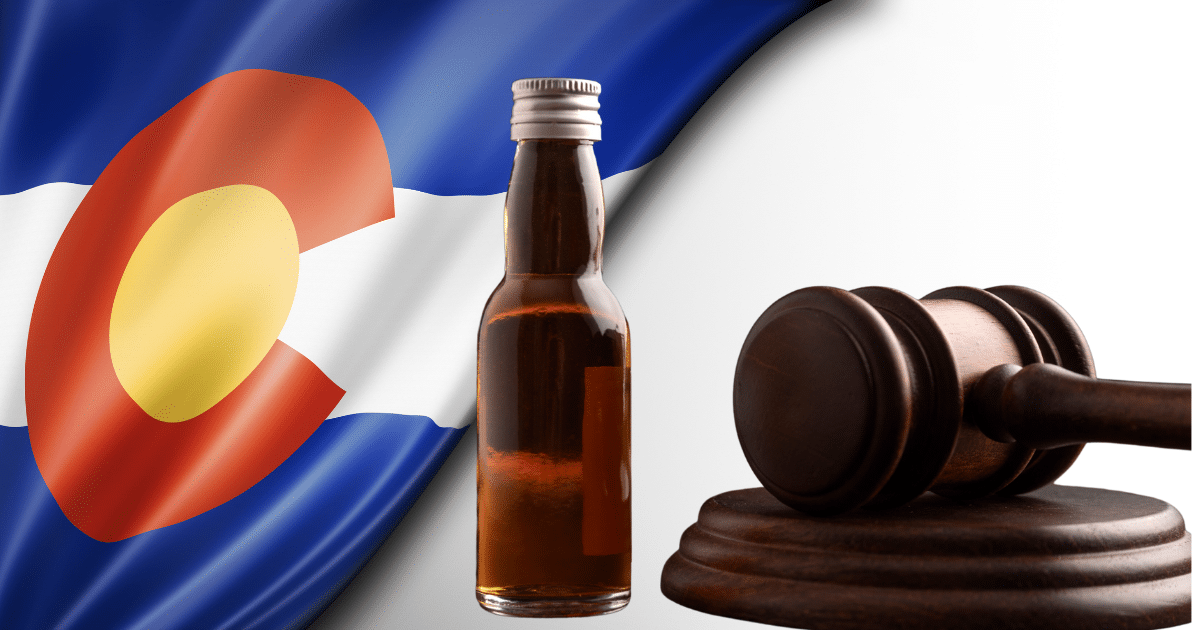According to data from the National Institute on Alcohol Abuse and Alcoholism, over 86% of people over the age of 18 have reported drinking sometime in their life while 56% report drinking at some point in the past month. An estimated 88,000 people die from alcohol-related causes every year, making alcohol the third leading cause of preventable death in the United States behind tobacco and poor diet and inactivity. Over 36,000 of these deaths caused by alcohol can be directly attributed to liver disease, including alcoholic cirrhosis.
Alcoholic Liver Disease is characterized by liver cell damage, inflammation, and eventually scarring of the liver that is caused by the body’s natural reaction to alcohol. When alcohol metabolizes in the liver it causes the body to create highly toxic byproducts that lead to these issues.
These symptoms can lead to the patients untimely death. However, with proper knowledge of the problem it may increase your chances of identifying the issue in you or a loved one which could help reverse the harmful effects of these diseases.
We’ve all heard that alcohol use damages your liver but what exactly happens to your body when you take a drink and why is it the liver that is affected?
Alcohol and Liver Damage
The liver is one of the most important and complex organs in the body. It is essential in filtering toxins from the blood, aiding in digestion, regulating blood sugar and cholesterol, and helping to fight diseases and infection.
The reason the liver is primarily susceptible to alcohol-related injury is because it is the site of alcohol metabolism, it is where the alcohol is broken down. Despite the fact that the liver has the ability to regenerate itself, this ability starts to fade as increased alcohol consumption continues. Heavy alcohol consumption consistent over many years clearly plays a major role in the development of liver damage. The NIAAA states that it takes an intake of 72 ounces of beer, 1 liter of wine, or 8 ounces of liquor daily over a period of 20 years to have an increased effect on your liver, the amount is less for women.
There are three main types of alcohol-related liver damage:
- Fatty Liver: a less serious type of damage that is reversible and is not believed to lead to more harmful damage. More than 90% of people who drink heavily develop fatty liver, yet only 20% of people have this progress to more serious diseases. Simply reducing drinking habits or quitting altogether will generally lead to favorable results that don’t continue to the next stage of damage.
- Alcoholic Hepatitis: characterized by widespread inflammation and destruction of liver tissue which can be fatal but may be reversible. This type of damage occurs in up to 35% of heavy drinkers. If heavy drinking continues it will turn into the most severe form of alcohol-induced liver disease for 40% of people.
- Alcoholic Cirrhosis: The most advanced form of liver disease in which the internal structure of the liver is damaged and distorted, it causes thousands of deaths a year. The change in liver structure causes problems with functionality and leads to malfunction of other organs such as the kidneys and brain. This type of alcohol-induced disease affects between 10 and 20% of heavy drinkers.
These three issues are thought to be related in that the damage progresses from one stage to the next, fatty liver to alcoholic hepatitis eventually to alcoholic cirrhosis. However, it is possible to skip over alcoholic hepatitis and for the body to move straight into the cirrhosis stage.
The Liver’s Reaction to Alcohol
While the liver can deal with and process a moderate amount of alcohol, drinking too quickly or too much over years can have disastrous effects for your health.
Most of the alcohol that people drink is metabolized in the liver and a lot of the process involves the enzyme alcohol dehydrogenase (ADH). During metabolization and through the process of oxidation, ADH converts alcohol to into byproducts that can be more harmful to the body than the alcohol itself. For instance, one type of byproduct is called acetaldehyde.
Acetaldehyde is an enzyme that is highly toxic to the body, even in low volume it is also a known carcinogen that can have a role in the development of alcohol-related cancers. Acetaldehyde can cause permanent scarring and damage to the liver cells and can go on to harm brain and stomach lining as well.
Similarly, much of the direct cell damage that occurs from alcohol is due to a group of metabolic byproducts called free radicals. Free radicals are highly reactive molecular fragments that normally contain oxygen. While the body does produce free radicals during natural metabolic processes due to the fact that they can destroy disease-causing microorganisms, the consumption of alcohol can inhibit the body’s defense system of free radicals and which can lead to increased liver damage. Free radicals can damage liver cells and lead to inflammation, which impairs vital functions such as energy production.
Inflammation is the body’s natural response to tissue damage in order to prevent the spread of injury and contact the body’s immune system to fight back. However, years of alcohol consumption can prolong the inflammatory process which can destroy healthy liver tissue due to excessive production of free radicals.
The body produces proteins called cytokines, a family of chemicals produced by carious immune system cells, as a natural response to infection and cell damage, and alcohol consumption increases cytokine levels. However, a side effect of cytokines protective function is increased inflammation. For the body, this counter-intuitive defense mechanism results in a cycle of cell damage and inflammation.
This inflammation and damage to liver tissue eventually can result in scarring of the liver, a sign of liver fibrosis, that can eventually distort the internal structure of the organ, a notable symptom of cirrhosis.
Over time, these scars replace healthy liver tissue which causes interference with liver function.
Symptoms of Alcohol-Related Liver Disease
Generally, alcoholic liver disease is hard to spot because there aren’t many noticeable signs until after the liver has been severely damaged. Still, there are some general symptoms that can be looked for to see if you or a loved one may be developing a form of alcoholic-induced liver disease.
Some symptoms include:
- Feeling sick
- Loss of appetite
- One of the most common symptoms is jaundice, or yellowing of the skin or eyes
- Swelling in the ankles or stomach
- Confusion and drowsiness
- Vomiting blood
If you or a loved one regularly drinks alcohol in excess, ask as doctor to check for liver damage.
Factors of Vulnerability
There are a number of things that can influence one’s susceptibility to alcohol-induced liver disease. Factors include genetics, diet, gender and other diseases.
Genetics
Genetics is something that affects all individuals in all aspects of their life so it is no surprise that genetics can influence one’s chances of contracting an alcohol related liver disease.
Diet
Nutritional factors can come into play when dealing with this type of liver function. For example, a ketogenic high-fat, low-carb diet has been shown to promote liver damage in alcohol-fed rats. Also, high amounts of polyunsaturated fats found in foods like nuts, olive oil and fish may contribute to the development of cirrhosis.
Gender
As mentioned earlier, women can develop these types of diseases after consuming lower levels of alcohol over a short period of time compared to men. Also, it has been found that women have higher instances of alcoholic hepatitis and a higher mortality rate from alcoholic cirrhosis than men. The exact reasons for this are still being researched.
Hepatitis C
The presence of Hepatitis C can increase a person’s susceptibility to alcohol-related liver disease and can also influence the severity of cirrhosis. Treatment for patients with these types of liver diseases who also have Hepatitis C can also be more complicated and sometimes less effective.
Treatment
As discussed before, the forms of alcohol-related liver diseases generally works in progressive stages. Drinking can first lead to fatty liver, this happens to up to 90% of people that drink. However, because symptoms of this are hard to spot, drinking may not settle down and heavy drinking can lead to alcoholic hepatitis and eventually alcoholic cirrhosis, the most severe form of alcoholic liver disease. However, the process can sometimes skip the hepatitis stage or even not make it to cirrhosis before the person involved has already passed. That being said, there are treatment options and fatty liver and alcoholic hepatitis are frequently reversible.
Abstinence from alcohol is regarded as the cornerstone of alcoholic liver disease therapy. Abstinence has been proven to reverse fatty liver and alcoholic hepatitis and survival is improved among those who suffer from cirrhosis. However, for terminally ill patients with these diseases, liver transplant remains the only viable type of treatment.
According to statistics from the NIAAA, the five-year survival rate of individuals who have developed cirrhosis is 90%, however that number goes down to 60% for cirrhosis that is found in the late stages. Despite the drop, it is clear that not drinking can provide obvious benefits for those who have developed the disease, even if found in the late stages.
With the holiday season coming up, it may be hard to quit cold turkey. However, there are some things you can do to try and reduce your chances of indulging. For example, if you find yourself at a party this holiday season make sure to have an escape plan if the pressure becomes overwhelming. Another thing you can do to help your situation is having a non-alcoholic drink in your hand, if someone sees this they may not pressure you specifically to drink something else.
Putting sobriety first can go a long ways in decreasing your chances of developing alcohol-related liver diseases or surviving them.
‘The biggest benefit is learning where your body is in relation to alcohol and what you want your relationship with it to be,’ George F. Koob, director of the NIAAA told Self.com.
Depending on severity, a doctor can also recommend taking anti-inflammatory medication that may curb the onset of these types of diseases.
Taking preemptive steps to decrease your chances of Hepatitis C will also increase the likelihood of reversal of alcoholic liver disease if it develops. Things like never sharing needles, practicing safe sex and being cautious about tattoos and tattoo parlors can have a strong effect on your chances of catching Hepatitis C.
For the future, researchers are looking into things like nutritional supplements for patients with alcoholic liver disease which has been shown in some studies to protect against liver scarring, however, the effects are still being researched and are under investigation. It is recommended that an adequate supply of carbohydrates is important for treating alcoholic liver disease.
Researchers are also looking into the development of a medication that can moderate the toxic effects of cytokines that cause inflammation during their defensive functions.
What Now?
If you believe your loved one is suffering from alcohol abuse, abstinence can be hard. However, at Landmark Recovery, we are experts in the field of drug and alcohol recovery. We have various programs that help move our patients along on the road to recovery. Along with our programs, we also have blog content like alcohol recovery quotes that can help with motivation. With Landmark Recovery’s alcohol rehab, we can help you or a loved one get back to living a healthy lifestyle.

Choose Recovery Over Addiction
We're here 24/7 to help you get the care you need to live life on your terms, without drugs or alcohol. Talk to our recovery specialists today and learn about our integrated treatment programs.





